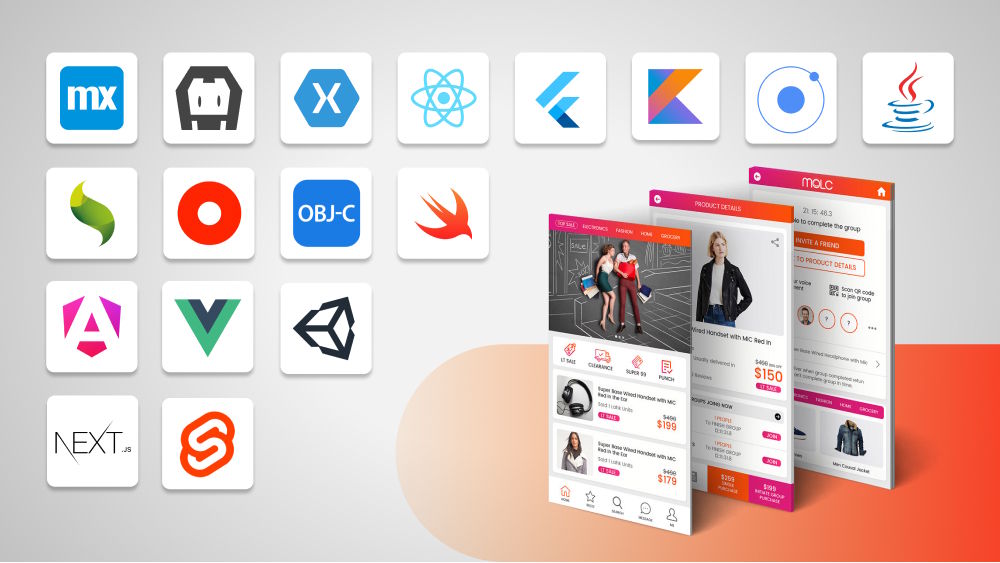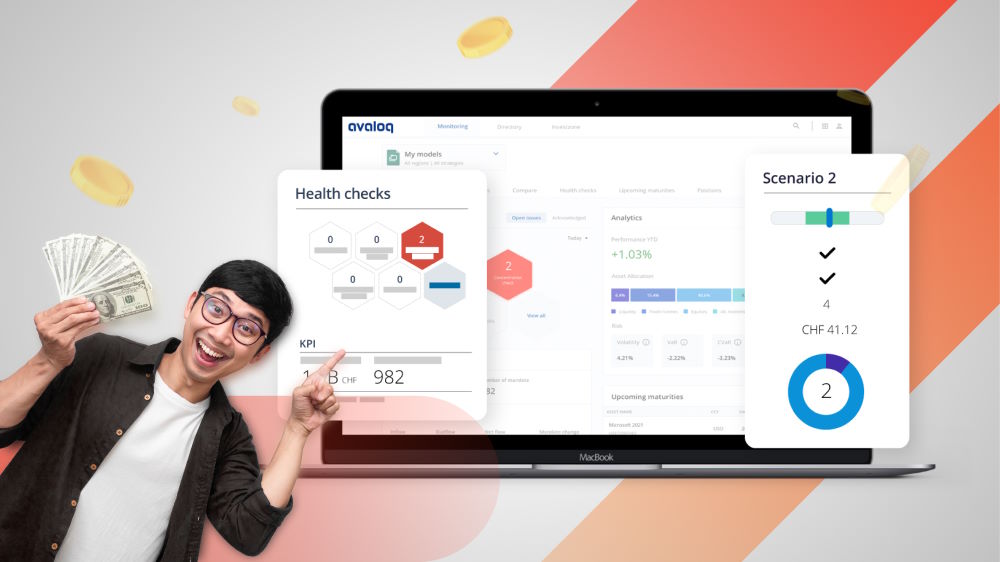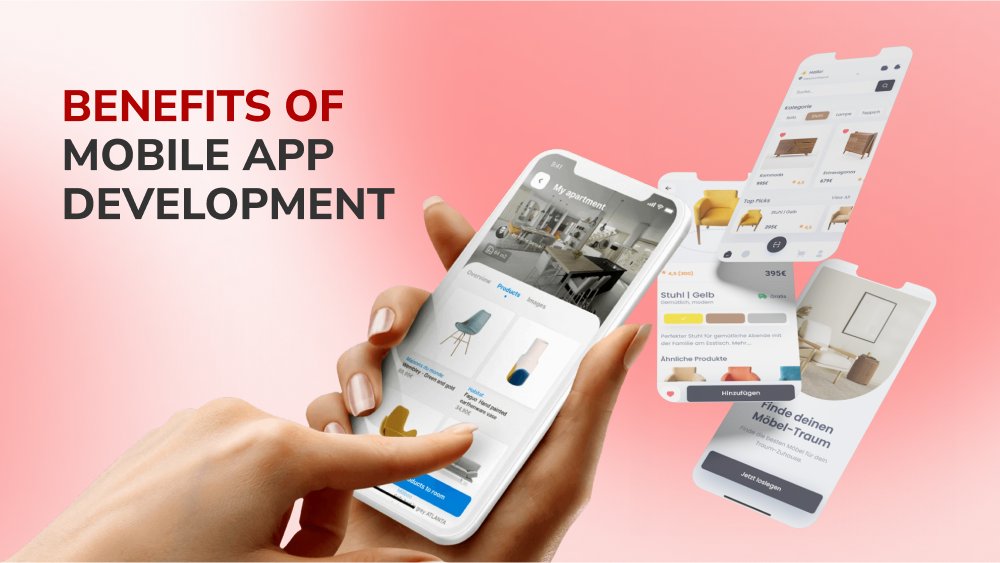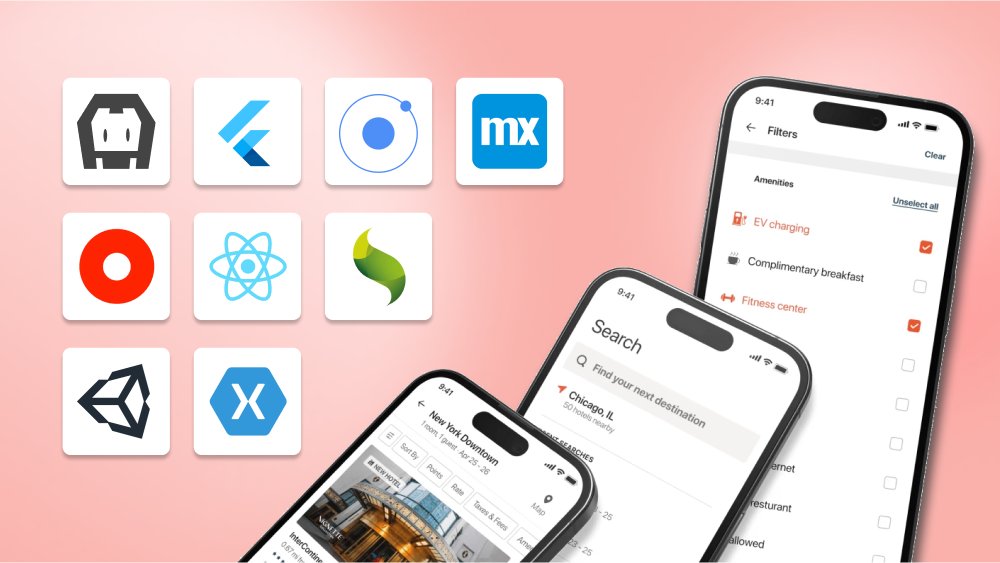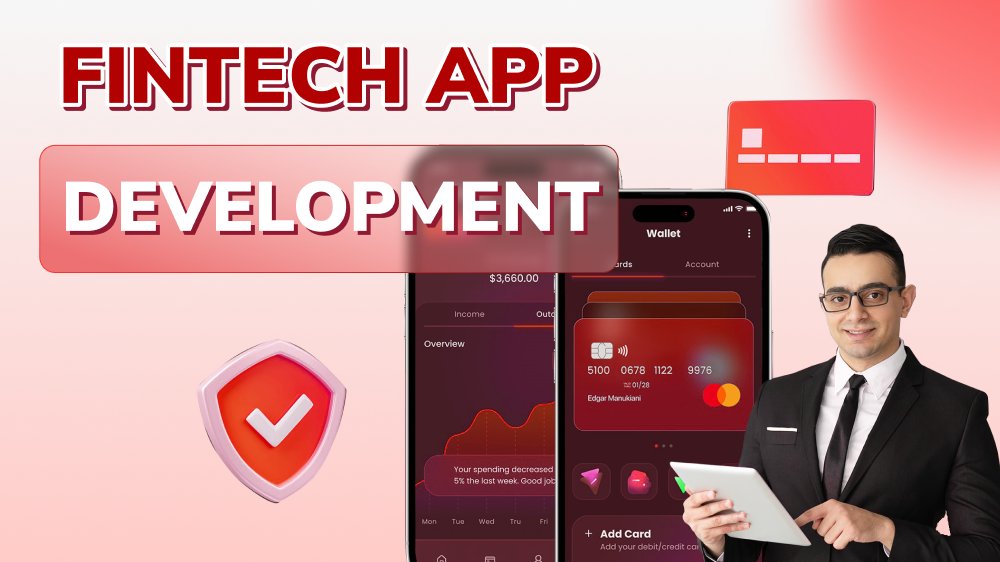What Roles Make Up a Mobile Application Development Team?
Here’s a breakdown of the crucial roles you will want to consider in your mobile app development team.
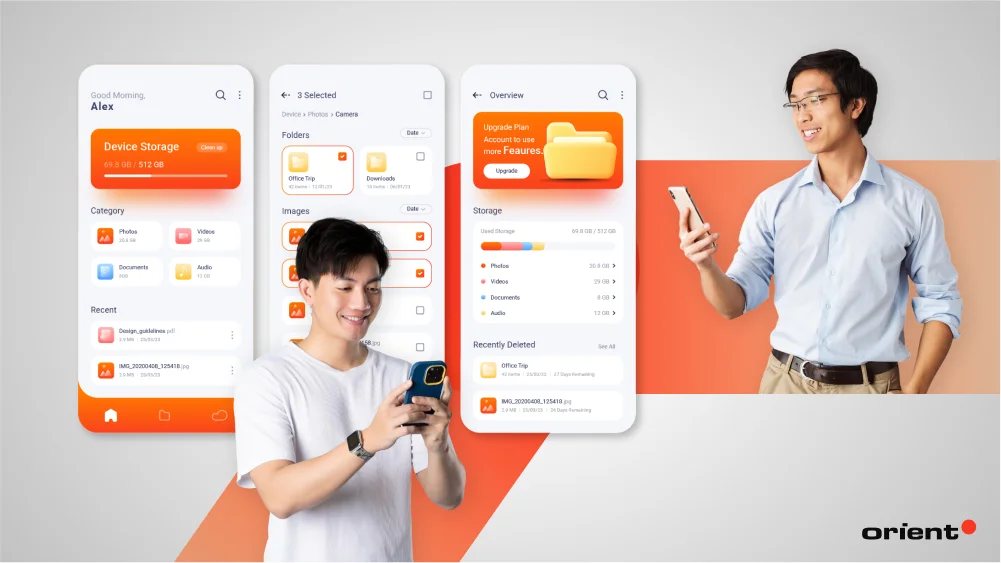
Content Map
More chaptersAgree or not, we are fully immersed in the era of mobile technologies. With over 6.3 billion smartphone users worldwide, five to six hours per day spent on using mobile phones, and 70% of digital time spent on using apps, it is more than clear that mobile applications have become an essential part of our modern lives. The statistics partially reflect the enormous market potential for mobile apps as well as the current and impending growth of “apps culture” - where mobile app solutions influence every aspect of lives, from socializing and shopping to banking, healthcare, or even business activities. Where there is demand, opportunities arise.
With such potential profitability, it’s no surprise that businesses of all sizes are entering the mobile app development space, hoping to carve out their share of this booming market. The potential is vast, but challenges remain just as significant, whether for mobile or other platforms. It is a high-stakes arena defined by intense competition and constant innovation.

The foundational driver of your successful mobile application is a well-structured development team that is responsible for transforming your vision into a seamless, scalable, and high-performing digital product. In this article, let’s break down the key roles that make up an ideal mobile app development team, why each role matters, and how to structure your team for maximum efficiency.
Key Takeaways:
The structure of a mobile app development team depends on several interrelated factors, such as project scope, technical complexity, timeline, budget, and internal resource availability. There is no one-size-fits-all model.
- A well-rounded core team typically includes a Project Manager, Product Manager, Product Owner, Business Analyst, UI/UX Designer, Mobile App Developers (iOS, Android, or Cross-Platform), Backend Developer, and QA Engineers or Testers.
- Additional roles such as Software Architects, Technical Writers, Marketing Specialists, Security Specialists, and Data Analysts may be required based on the project’s scale and goals.
- If building an in-house team is too costly or time-consuming, partnering with a mobile app development outsourcing company can be a faster, more flexible, and cost-effective solution - whether you need a full team or targeted role support.
The Core Roles of a Mobile Application Development Team
The team structure varies based on several interdependent factors, such as project scope and complexity or budget and resource availability. Plus, how you structure a mobile team also depends on your specific business objectives. For example, a startup or a small company tends to rely on a lean team with generalists who can wear multiple hats. In contrast, large businesses or enterprises often favor a more specialized and hierarchical team where each member is clearly delineated and focused on a specific area of responsibility.
Ultimately, the right team or the right structure is not one-size-fits-all. It should reflect your project’s goals, development methodology (E.g., Agile or Scrum), and the level of flexibility or control your organization needs. The key is to find the optimal balance between specialization and agility, so your team can adapt to changing requirements without sacrificing performance or quality.
Product Manager
A product manager is the visionary and strategist of a mobile app development project. This person is essentially the voice of the customer and acts as a bridge between business objectives and user needs to ensure that the mobile solution doesn’t just work but also solves the right problems for the right users. He or she is responsible for identifying the market opportunity, defining the product’s value proposition, and shaping the roadmap that guides the entire development process.
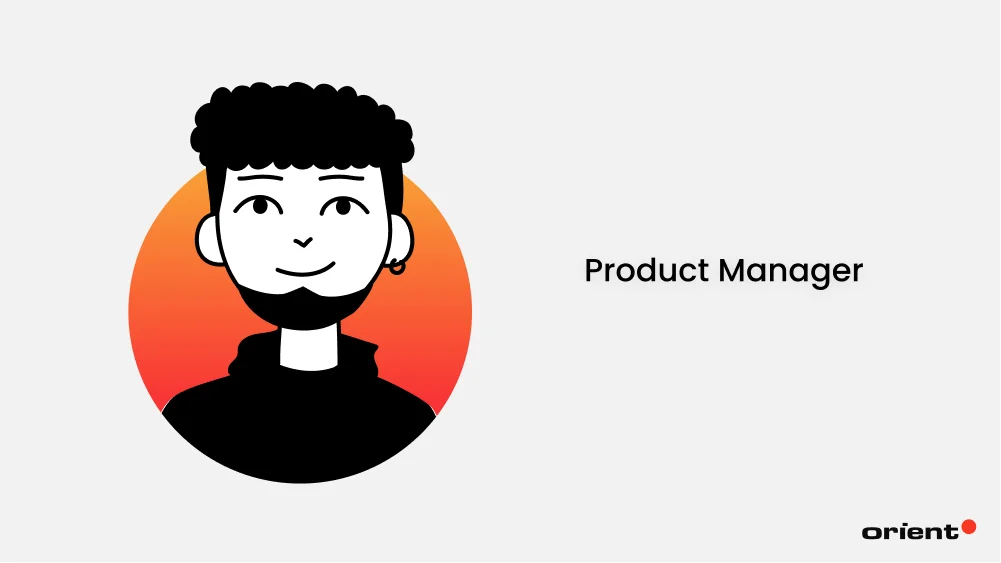
Responsibilities
On a typical day, the product managers focus on user value, business outcomes, and long-term product success. They align the products with user needs and business goals through strategic decision-making and continuous iterations.
- Conduct market/user persona research and competitive analysis to identify opportunities.
- Define the product vision, value proposition, and long-term roadmap.
- Gather and prioritize requirements based on user feedback and stakeholder input.
- Translate user needs into high-level features and epics for the development team.
- Collaborate with UX/UI designers to ensure user-centric design solutions.
- Work with stakeholders to align product features with business objectives.
- Monitor product performance using KPIs and user analytics.
- Make data-driven decisions about product improvements, pivots, or feature rollbacks.
- Act as the internal “voice of the customer” during planning and review sessions.
- Maintain the product backlog and prioritize features for development cycles.
Why This Role Matters
A skilled product manager keeps the entire team aligned, efficient, and focused. They prevent misalignment between stakeholders and execution teams, ensure that priorities are clear, and drive progress without delays. Without this role, projects are more susceptible to scope creep, miscommunication, and missed deadlines. These are issues that can derail even the best ideas.
That’s why the role demands strong leadership, sharp organization, risk mitigation, and foresight to prevent bottlenecks before they surface.
In startups or lean teams, the product manager may take on marketing, analytics, PO (Product Owner) tasks, or even the project management role. However, in a larger composition, they work in tandem with the product owner to ensure execution matches the vision.
Project Manager (PM)
This person plays the role of an operational lead. A project manager takes responsibility for the whole mobile app development process with a focus on how and when the product gets delivered instead of what is built like a product manager. As a tactical coordinator, project managers oversee execution and ensure the right people, tools, timelines, and resources are in place for a successful mobile app project - on time, within the initially agreed budget, and up to the specified quality standards.
.webp)
Responsibilities
- Create and maintain detailed project plans, timelines, and schedules.
- Break down large deliverables into manageable tasks and milestones.
- Allocate resources effectively and adjust plans as priorities shift.
- Facilitate sprint planning, retrospectives, and daily stand-ups in Agile setups.
- Identify risks, track issues, and implement mitigation strategies.
- Ensure timely delivery of features and adherence to quality benchmarks.
- Serve as the central communication hub between team members and stakeholders.
- Monitor progress using project management tools (e.g., Jira, Trello, ClickUp).
- Manage change requests and maintain control over project scope.
- Report on project status, blockers, and outcomes to leadership teams.
Why This Role Matters
Competent PMs bring order to complexity by managing scope, budget, schedule, and team workflows, ensuring the product development process runs smoothly like a well-oiled machine. Without a project manager, even the most brilliant product ideas can become delayed, disorganized, or derailed. This role is critical to transforming strategic intent into execution success. Moreover, a project manager is also the glue that binds cross-functional teams together to reduce failure risks linked to missed deadlines, miscommunications, and burnout.
In smaller teams or early-stage projects, this role may be absorbed by the product manager or team leader. But for high-stakes projects, a dedicated project manager is often needed to ensure predictability, accountability, and scalability across the team.
Product Owner (PO)
The product owner is more execution-focused and tactical compared to the product manager. Their main role is to manage the product backlog and serve as the voice of the end-users during app development stages. The PO ensures the “what” becomes “how” in a clear, prioritized, and efficient manner.
While the product manager sets the long-term vision and strategy, the product owner is embedded in the day-to-day development process. This person is in charge of clarifying requirements, making trade-off decisions, and ensuring that the team is always building the right features in the right order.
Day to day, a PO writes user stories, sets acceptance criteria, and frequently answers developer questions to keep the team unblocked. They lead sprint planning sessions, review what gets built, and refine the backlog based on what was learned in each iteration. If something is unclear, the PO is the one the team turns to for immediate clarification.
.webp)
Responsibilities
- Define and maintain the product backlog, including writing clear user stories and acceptance criteria.
- Prioritize backlog items based on business value, technical dependencies, and user feedback.
- Collaborate closely with the development team to clarify requirements and unblock tasks.
- Make real-time decisions on scope adjustments during sprints.
- Participate in sprint planning, reviews, and retrospectives.
- Act as a single point of contact for requirements during development.
- Validate completed features to ensure they meet the intended purpose.
- Gather feedback from stakeholders and users to inform backlog refinement.
- Ensure that what is delivered aligns with the product manager’s vision and strategy.
- Bridge communication between the technical team and non-technical stakeholders.
Why This Role Matters
In Agile environments, especially Scrum, the PO is embedded in the dev team and plays a critical role in ensuring that the development work is always aligned with business needs and user priorities.
Without a product owner, the team may risk building features based on assumptions, facing unclear directions, or wasting time on low-impact tasks. The POs help reduce ambiguity, accelerate decision-making processes, and keep the whole development team staying on the right track and delivering value sprint after sprint.
As mentioned earlier, the PO and the product manager are often the same person, but in the enterprise setting, the PO operates closely with developers and QA engineers while the product manager interacts with stakeholders and executives.
Business Analyst (BA)
In the mobile app development team structure, a business analyst acts as the interpreter between stakeholders and developers to bridge business demands with functional execution. Rather than jumping into what to build, BAs focus on the why behind the product requirements and translate the understanding into actionable documentation and clear specifications for developers and designers, shaping the right direction for the whole app development process.
.webp)
Responsibilities
- Gather and analyze business requirements from stakeholders and end users.
- Translate business needs into technical specifications and functional requirements.
- Create user stories, process flows, wireframes, and other documentation to guide development.
- Collaborate with product managers to validate product-market fit and feature prioritization.
- Support the creation of prototypes and minimum viable product (MVP) definitions.
- Assist QA teams with test case development based on requirements.
- Identify gaps, redundancies, or risks in proposed workflows or solutions.
- Ensure requirements are feasible within budget and technical constraints.
- Continuously refine documentation based on feedback from developers and testers.
- Serve as a liaison to clarify expectations and ensure alignment across all parties.
Why This Role Matters
While BAs are not always present in startup teams, they are especially important in complex or large-scale projects that usually involve intricate workflows, regulatory constraints, or multiple stakeholder groups. This is when the role of business analysts shines, as they can add clarity and structure to the design and development process.
In the absence of a BA, the product manager or developers have to bear the burden of translating business goals into development tasks, which potentially leads to gaps in understanding and inefficient workflows. With a BA, the development team can benefit from deeper analysis, better documentation, and smoother handoffs between vision and execution.
UI/UX Designer
A UI/UX designer is the creative architect who is responsible for creating intuitive, visually appealing interfaces that enhance user engagement. This role helps blends human psychology, user behavior, and aesthetic sensibility in order to translate product vision into tangible designs that users will interact with on their screens.
A UI/UX designer must own strong attention to detail and a keen eye for aesthetics. In addition, a designer has to possess the ability to think from the user’s perspective and understand their needs and convert insights into design solutions. Additionally, strong communication and teamwork spirit are also required since designers have to work closely with other software development team members.

Responsibilities
- Conduct user research and competitive analysis to understand target audience behaviors and pain points.
- Create user personas, journey maps, and wireframes to define experience flows.
- Design high-fidelity mockups, UI components, and interactive prototypes.
- Ensure visual consistency and accessibility across screens and devices.
- Validate designs through usability testing, user feedback, and iteration.
- Work closely with developers to ensure design intent is preserved in implementation.
- Refine interfaces based on real-world usage and analytics.
- Maintain a design system or component library for scalability and reusability.
- Stay updated with mobile design trends, platform guidelines, and emerging tools.
- Advocate for the user in design and product discussions.
Why This Role Matters
In today’s user-first world, UI/UX design is not an optional layer; it is a core part of product success. A mobile app with a confusing interface or poor user flow is likely to be abandoned, no matter how powerful its backend or how rich its features are. That’s where UI/UX designers make a measurable difference. They ensure technical functionality is wrapped in clarity and elegance and transformed into meaningful, enjoyable user experiences that drive app success through higher engagement, retention, brand loyalty, and revenue growth.
In small or medium teams, one designer may cover both UI and UX, along with branding. In larger setups, you may find these as separate roles, often supported by researchers or motion designers, depending on the app’s ambition.
Mobile App Developers
These are the builders behind your mobile app solutions. They are the ones who turn design and business logic into working code. Mobile app developers are in charge of implementing app functionality, ensuring performance, integrating backend services, and delivering a stable, scalable product across mobile platforms.
Depending on your target audience and platform strategy, mobile developers typically specialize in one of three main areas: iOS, Android, or cross-platform app development. Each path requires different skill sets, tools, and programming languages, but all demand strong technical proficiency, attention to detail, and collaboration with designers and other team members.
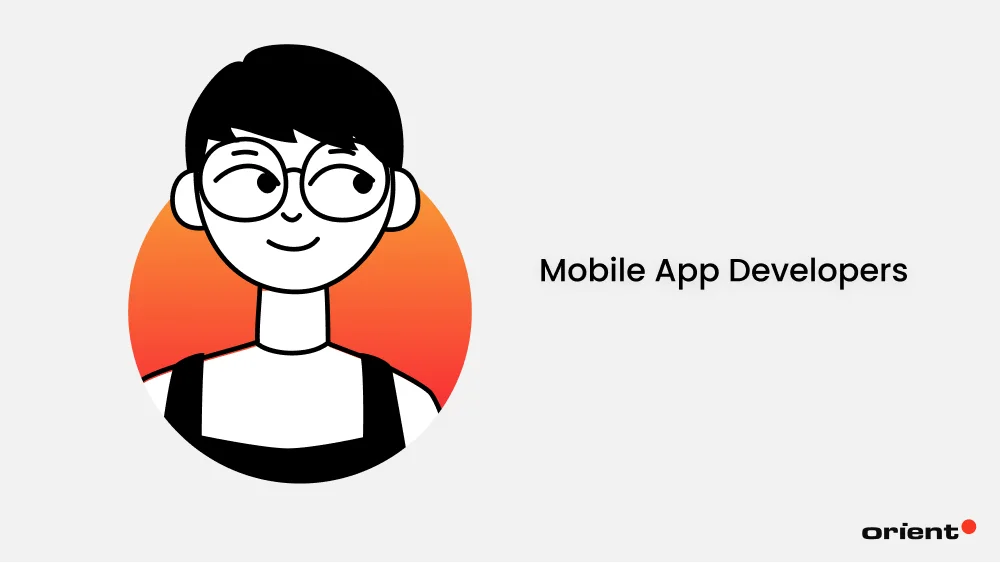
iOS Developers
These professionals specialize in building applications for Apple devices such as iPhones, iPads, and Apple Watches. They work within the Apple ecosystem and follow strict design and technical guidelines to ensure smooth performance and approval on the App Store.
- Develop iOS applications using Swift or Objective-C.
- Build responsive UI based on UIKit or SwiftUI frameworks.
- Integrate APIs and work with backend services.
- Ensure performance optimization and memory management.
- Adhere to Apple’s Human Interface Guidelines and App Store requirements.
- Implement in-app purchases, push notifications, and device hardware integrations.
- Write unit and UI tests using tools like XCTest or XCUITest.
- Debug, profile, and fine-tune app performance.
With Apple’s ecosystem having a loyal and high-spending user base, iOS development is often a strategic priority. Skilled iOS developers can guarantee the mobile app feels native, performs smoothly, and complies with Apple’s rigorous standards essential for gaining user trust and platform visibility.
Android Developers
Android developers create apps for devices running the Android operating system, which dominates global smartphone usage. Android development involves more device fragmentation and a broader range of form factors, requiring careful attention to compatibility and testing.
- Write apps in Java or Kotlin using Android Studio.
- Design layouts using XML and implement Material Design guidelines.
- Manage device and OS compatibility across various Android versions.
- Integrate RESTful APIs, Firebase, and other third-party services.
- Handle local data storage, background processing, and app lifecycle.
- Ensure mobile app performance and minimize battery/resource usage.
- Write unit and UI tests with Espresso, JUnit, or Robolectric.
- Submit apps to the Google Play Store and manage releases.
Cross-Platform Developers
These developers build apps that run on both iOS and Android using a single codebase. They use frameworks like Flutter, React Native, Xamarin, or Ionic to accelerate development, reduce duplication, and lower overall costs.
- Build mobile applications using cross-platform frameworks (e.g., Flutter with Dart, React Native with JavaScript).
- Write reusable, platform-agnostic code while handling platform-specific nuances.
- Integrate plugins and platform-specific APIs.
- Ensure consistent UI/UX across Android and iOS while adhering to native conventions.
- Debug across multiple environments and devices.
- Maintain performance parity with native apps.
- Collaborate with native developers if deeper integration is needed.
Backend Developers
Backend developers are the architects of logic and data management. They lay the foundation for how a mobile app function. They build the invisible engine: APIs, databases, servers, and business logic.
Different from client-side/frontend developers who focus on the user interface, what backend developers contribute to the mobile product is not seen but felt through smooth interactions, fast response times, and a sense of trust in how the app handles data.

Responsibilities
- Architect scalable server-side systems to support mobile functionality.
- Create RESTful or GraphQL APIs for communication between the front end and the back end.
- Design and manage databases (MySQL, PostgreSQL, MongoDB, Firebase, etc.).
- Handle user authentication, authorization, and secure session management.
- Implement core business logic like payment processing, content filtering, or messaging queues.
- Enforce data validation, error handling, and security protocols.
- Optimize backend systems for speed, reliability, and uptime.
- Integrate third-party services (Payment gateways, analytics, cloud storage, etc.).
- Monitor logs and metrics to proactively detect and resolve performance issues.
- Collaborate closely with DevOps, mobile developers, and QA engineers to ensure smooth delivery.
Why This Role Matters
Without a strong backend, even the best front-end experiences can collapse under load or security flaws. Backend developers are not just coders but system thinkers who work to ensure the mobile application not only functions but operates well under pressure and safely handles sensitive data. Moreover, their work ensures the app remains maintainable over time and reliably interacts with databases, third-party services, and cloud platforms. In brief, backend developers are a critical part of the team, creating a robust and responsive app experience that goes beyond visuals and interaction.
Quality Assurance Engineer/Tester
In modern mobile app development, quality is a continuous thread that runs through every stage. Quality assurance (QA) engineers and testers both play essential roles in delivering polished, stable, and high-performing applications.
While they have the shared goal of ensuring the app works as intended and delivers a smooth UX, each contributes differently to the overall process. QA engineers are accountable for embedding the quality-focus approach into the development process and preventing defects in the first place. Meanwhile, testers concentrate on the validation and verification of features and functionality; they are tasked to uncover bugs, usability issues, and regressions before they impact users. Their roles differ in scope and specialization. Still, QAs and testers work closely to form a complementary collaboration to deliver a reliable, high-quality app.
The distinction between QA Engineer and Tester often depends on the mobile development team structure, size, and maturity of the development process. In small teams, one person may perform both roles. In such cases, the titles - QA and tester - are often used interchangeably.
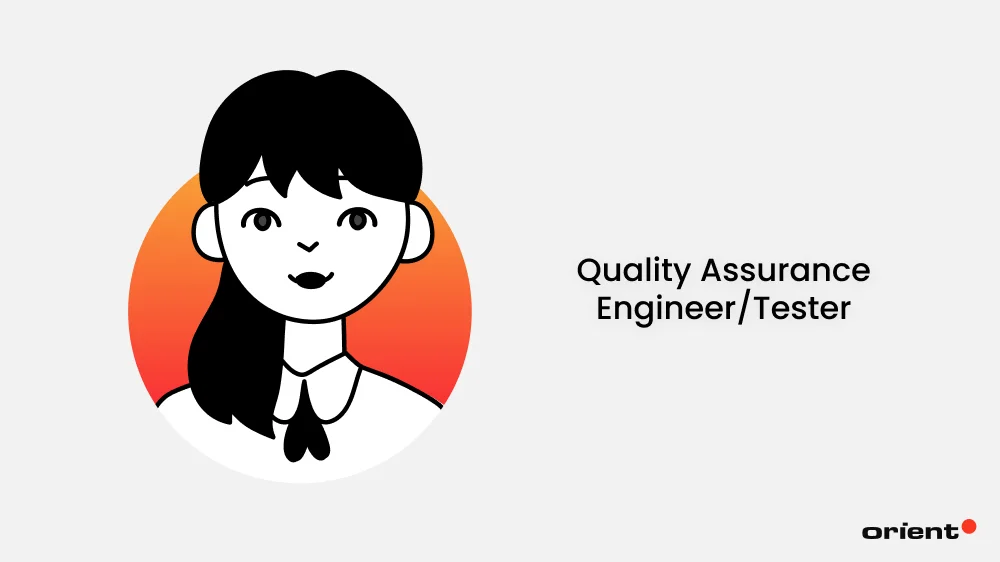
Responsibilities
Quality Assurance Engineers:
- Design and implement overall testing strategies and quality processes.
- Create and maintain automated test frameworks (e.g., using Appium and Selenium).
- Collaborate with developers, product managers, and testers to define acceptance criteria.
- Integrate tests into CI/CD pipelines for continuous validation.
- Analyze product requirements to identify testable elements early.
- Ensure test coverage across different devices, OS versions, and environments.
- Monitor key quality metrics (e.g., defect rates, test coverage, crash rates).
- Advocate for process improvement and drive test automation adoption.
- Ensure compliance with performance, security, and accessibility standards.
- Support testers with tools, documentation, and guidance.
Testers:
- Execute manual or scripted test cases across multiple devices and platforms.
- Perform exploratory testing to discover edge cases and unexpected behavior.
- Identify, reproduce, document, and report bugs using tools like Jira or TestRail.
- Validate user stories and feature implementations against specifications.
- Conduct UI/UX testing to ensure visual and functional consistency.
- Retest bug fixes and verify resolved issues.
- Run regression tests after code updates to ensure nothing breaks.
- Assist in user acceptance testing (UAT) and release readiness checks.
- Collaborate with developers to clarify and communicate test results.
- Provide usability feedback from a user’s perspective.
Why These Roles Matter
Together, QA engineers and testers ensure a holistic approach to quality. The QA specialists ensure the right things are tested by identifying what should be validated and designing effective strategies and automation frameworks. The testers ensure those areas are thoroughly validated through hands-on execution. Their collaboration accelerates feedback loops and enables faster detection and resolution of bugs and regressions.
Additional Roles Worth Considering
In addition to the core members, there are more specialized roles that can empower your team and add critical value to the mobile app’s success from both technical and business perspectives.
Software Architect
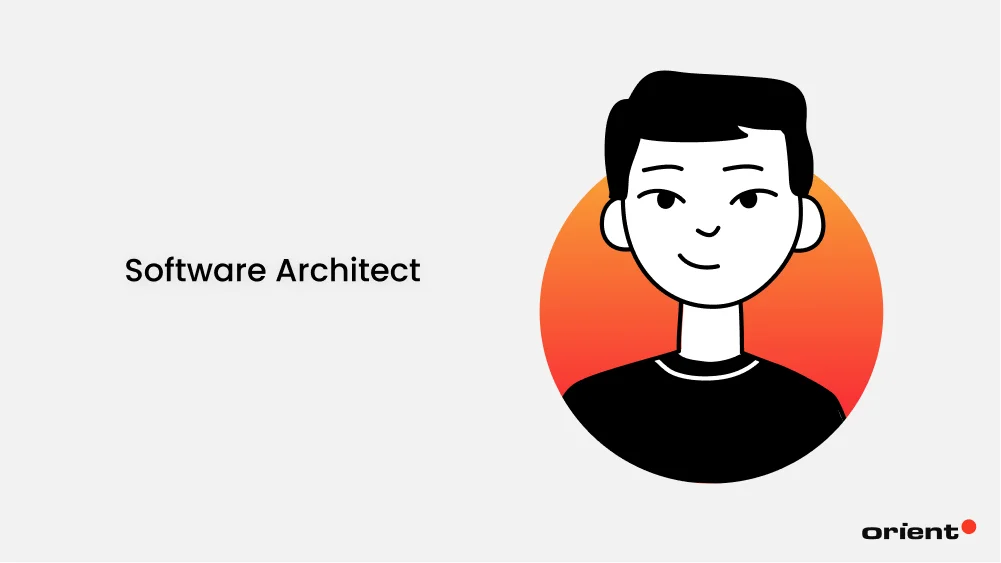
A software architect oversees the technical blueprint and provides high-level guidance on how the app’s systems are structured and how components interact. They define high-level design choices, select appropriate technology stacks, and set architectural standards for performance, scalability, and security.
Without a strong architectural foundation, even well-built features can lead to scalability issues or technical debt. Architects ensure that technical decisions made early on don’t become liabilities later. Additionally, they mentor developers, review code for structural integrity, and collaborate with DevOps and QA engineers to align architecture with deployment and testing strategies.
When Needed: A software architect becomes necessary in large, multi-featured apps, enterprise systems, or projects expected to scale significantly.
Technical Writer

As the title suggests, a technical writer is tasked to comprehend and translate complex technical processes, features, and system interactions into clear, accessible documentation. This includes API documentation, developer guides, user manuals, onboarding materials, and in-app content. Technical writers are assigned to support the development team and bring clarity, structure, and consistency into documentation, reducing confusion and ambiguity.
When Needed: This role becomes particularly valuable when the app evolves quickly or include intricate workflows related to the industry context, such as fintech, healthcare, or enterprise tools. Usually, product managers or developers often take over this job; however, as the product scales, having a technical writer is a big advantage - maintaining clarity and consistency across all user-facing and technical materials.
DevOps Engineer
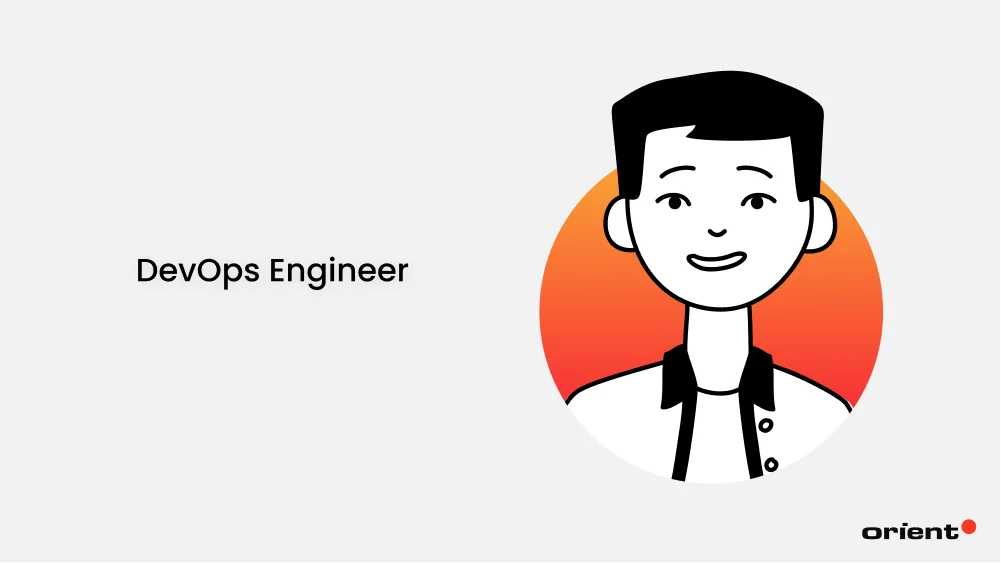
DevOps engineers set up automated workflows that streamline code integration, testing, deployment, and monitoring. They manage infrastructure, configure CI/CD pipelines, and ensure smooth release cycles.
When Needed: Without DevOps, teams may face bottlenecks, manual deployment risks, or delayed releases. You will need a DevOps engineer on your team when automation, speed, reliability, and scale are your priorities. If you are building an MVP with a small team and infrequent releases, having DevOps roles is optional.
Marketing Specialist

As a storyteller and growth strategist of the mobile app team, marketing specialists are appointed to attract, engage, and retain users. They collaborate with product managers and designers to conduct market research, define target audiences, craft messaging, and plan go-to-market strategies.
When Needed: A great app can go unnoticed without visibility. The marketing roles are necessary for a mobile app team, especially when you are the company that builds and launches the product from A to Z. They join the planning phase (before or during development kickoff) to work on the market strategy foundations, including target audience, user personas, unique value proposition (UVP), market differentiation, etc. Their role also becomes important in the final sprint before release - to prepare o-to-market activities.
Security Specialist

Security is built-in, not patched on later. These professionals ensure the mobile app is protected from security threats and prevent costly breaches that could damage reputation and trust. They guard user data, APIs, and backend systems through encryption, secure authentication, and compliance with standards like GDPR or HIPAA.
When Needed: Any complex app or mobile solution that processes private data, includes payments/authentication or must comply with regulations.
Data Analyst
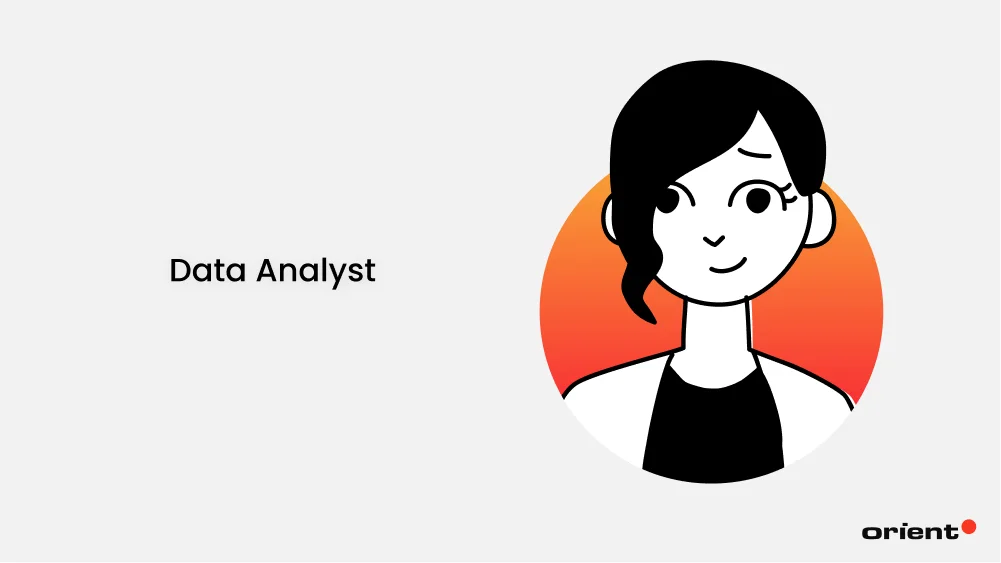
Post-launch success hinges on understanding how users interact with your app. A data analyst collects and interprets raw user and system data into strategic insights that guide product decisions and reduce guesswork. Data analysts usually work with product managers, and they help shape KPIs, optimize user flows, and ensure development is aligned with what users actually do.
When Needed: Data analysts are necessary for data-rich mobile apps or when data-driven decision-making is a strategic focus (e.g., user growth, churn reduction, A/B testing).
Now that we’ve explored all the essential and additional roles within a typical mobile app development team, Interestingly, these are not unique to mobile development; they closely mirror those found in most modern software development team structures. At the end of the day, the composition of your own mobile development team revolves around the specifics of your project. There is no one-size-fits-all structure, so you have to decide how your team should be structured and whom to include.
Should You Outsource Your Team to a Mobile App Development Company?
Starting an in-house team is a major investment, not only in money but also in time, expertise, and long-term commitment. And if it is expensive or time-consuming for you, outsourcing can offer a faster and more cost-effective way to kickstart your mobile app development project.
Whether you are building an iOS or Android app development team, the need for clear ownership, collaboration, and role-based expertise remains the same. By outsourcing, you can tap into a pool of well-vetted talent, ranging from UI/UX designers and mobile developers to QA engineers, DevOps, and more. They bring forth deep expertise, refined processes, and cross-industry experience, ready to hit the ground running. With a reliable outsourcing partner, you can assemble a complete, well-coordinated team from day one.
You can also choose a different collaboration model instead of a dedicated team. You can augment your in-house team with external specialists to bridge skill gaps, manage workload spikes, or accelerate delivery in specific areas. This is known as staff augmentation services. It gives you the flexibility to ramp up or down resources based on project demands without the overhead of permanent hires, whether it is an iOS or Android development team.
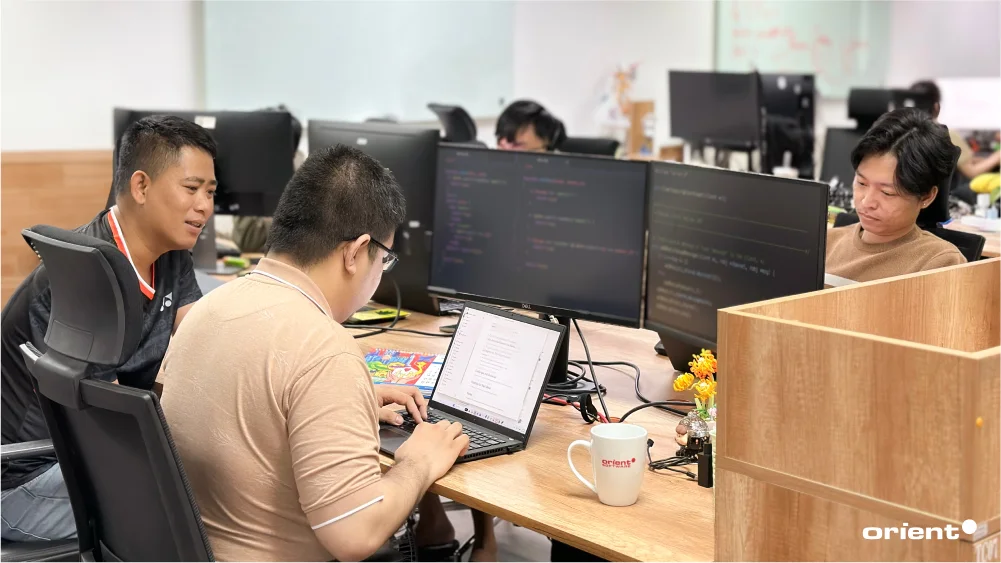
If you are unsure how to assemble your mobile app development team, consult with our experts for valuable insights and advice. We are Orient Software - a professional service provider that specializes in end-to-end mobile app development services and specialized support for any specific role you require. Whether you are starting from scratch, scaling an existing team, or looking to augment specific capabilities, we can help you. Just tell us where you are in your journey by leaving a message, and we will get back to you within three business days. Let’s form a successful mobile app development team together.

